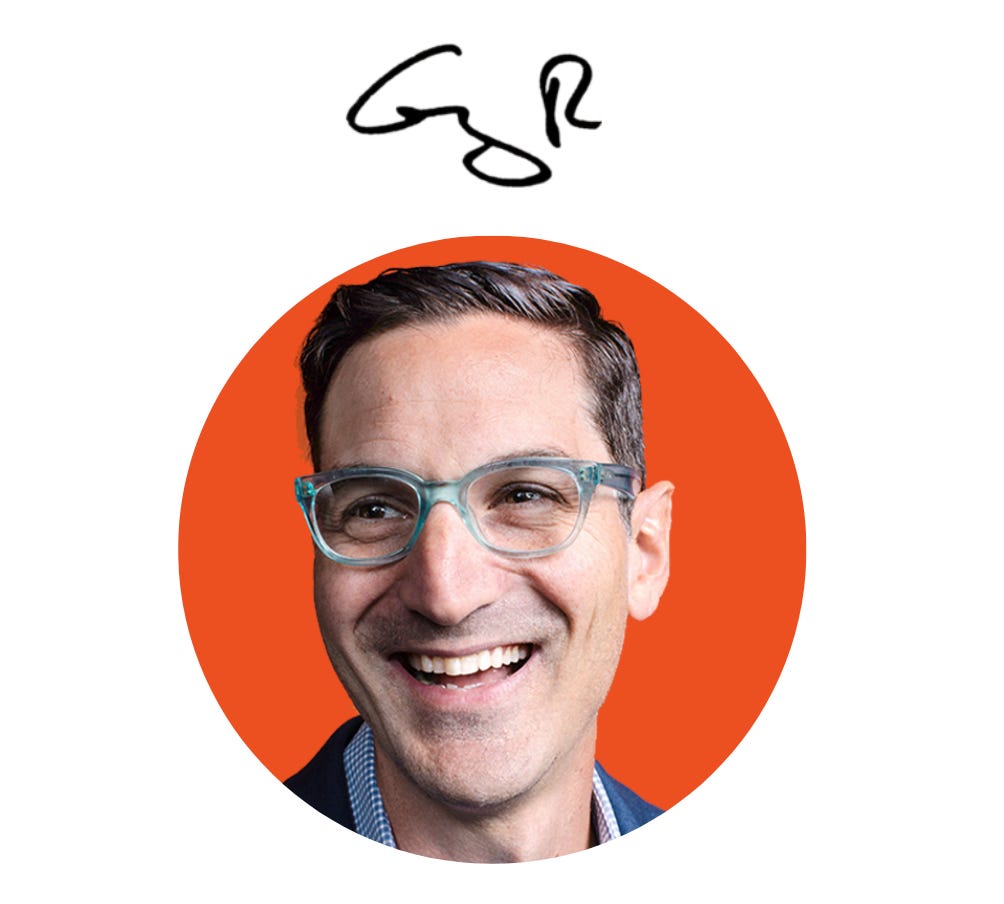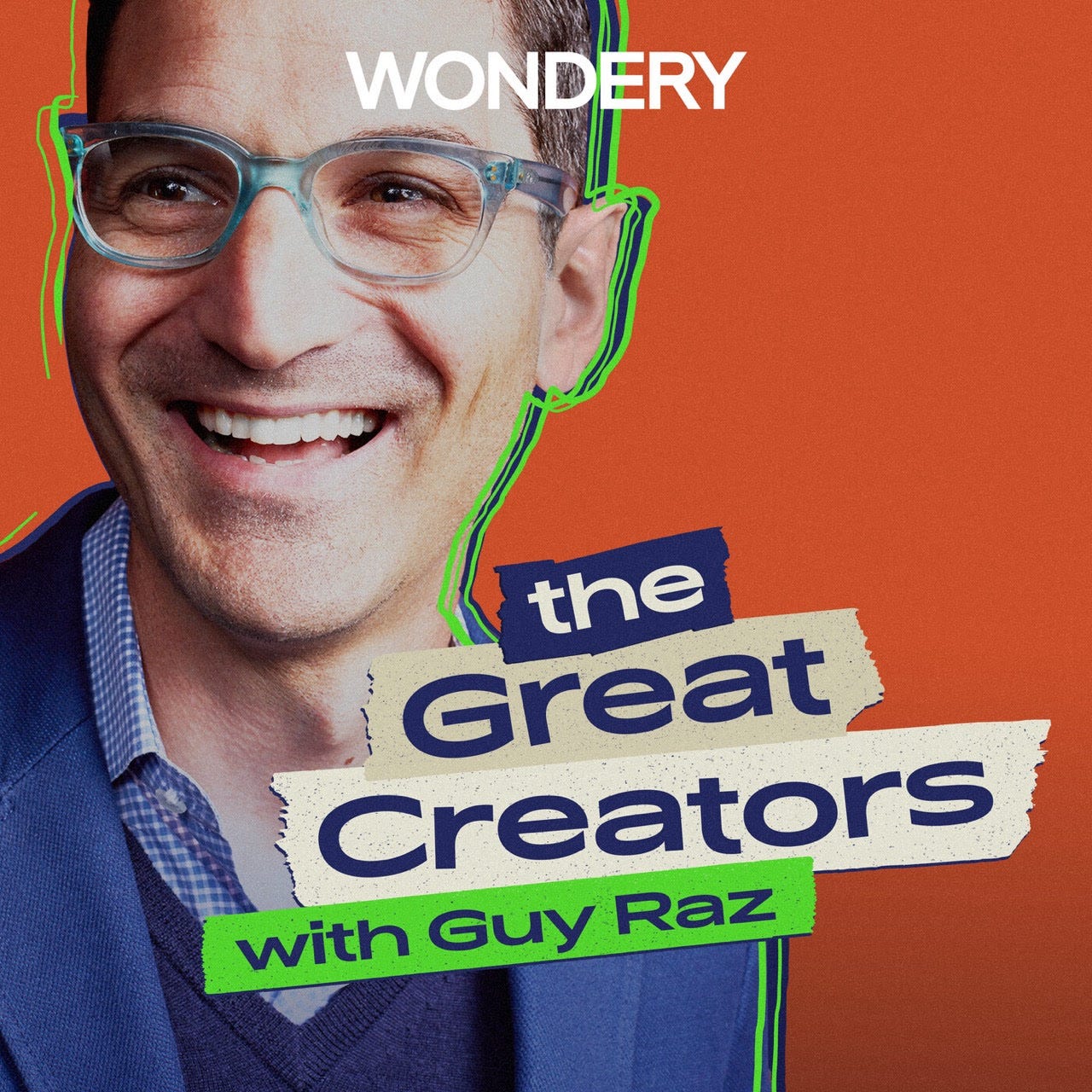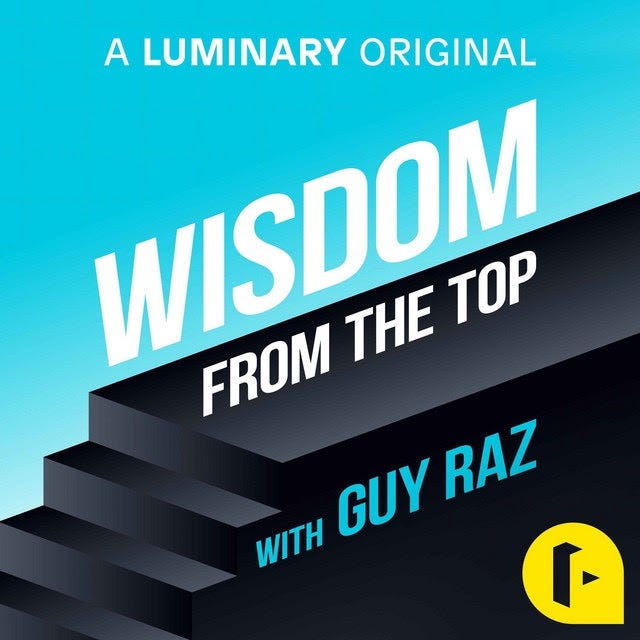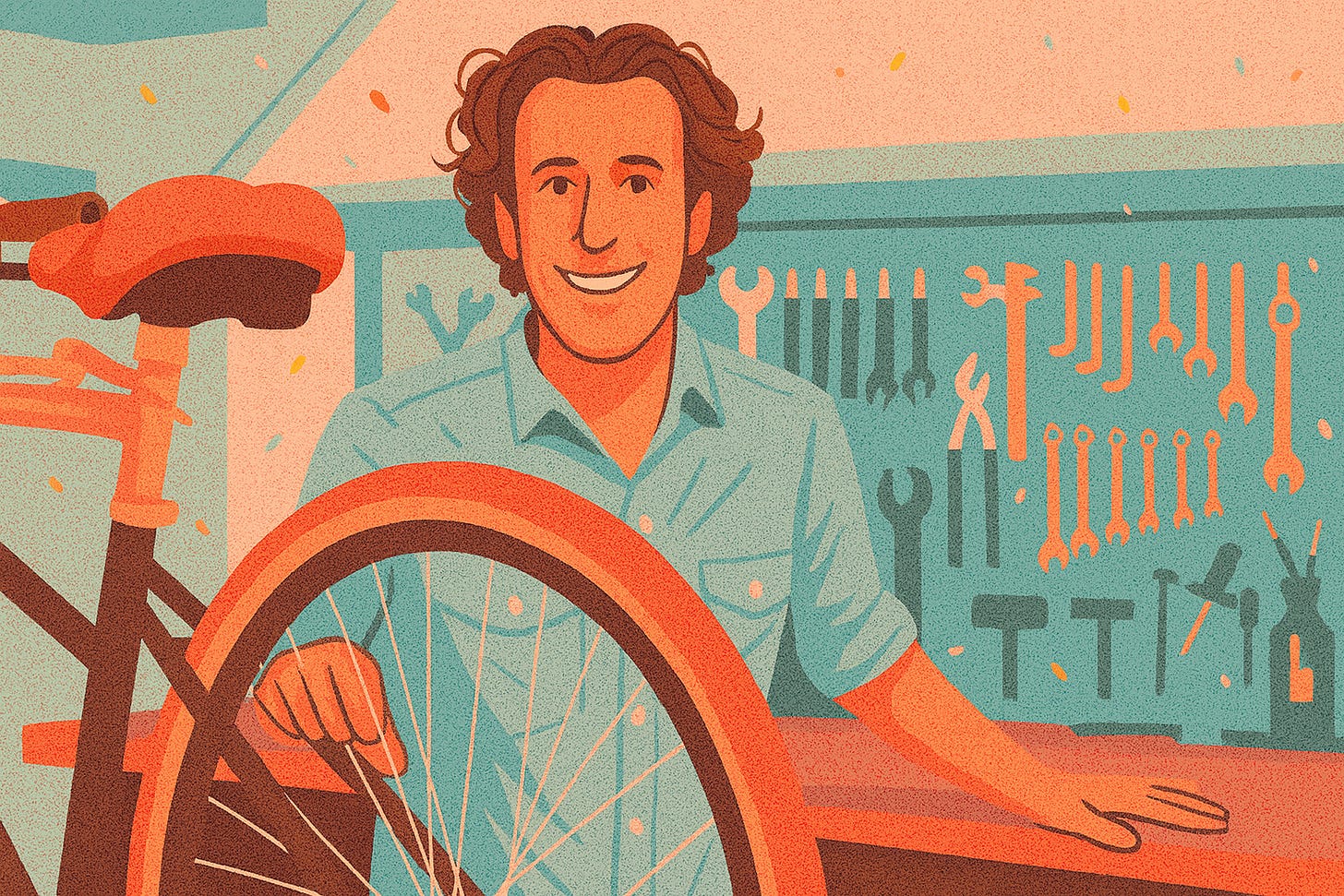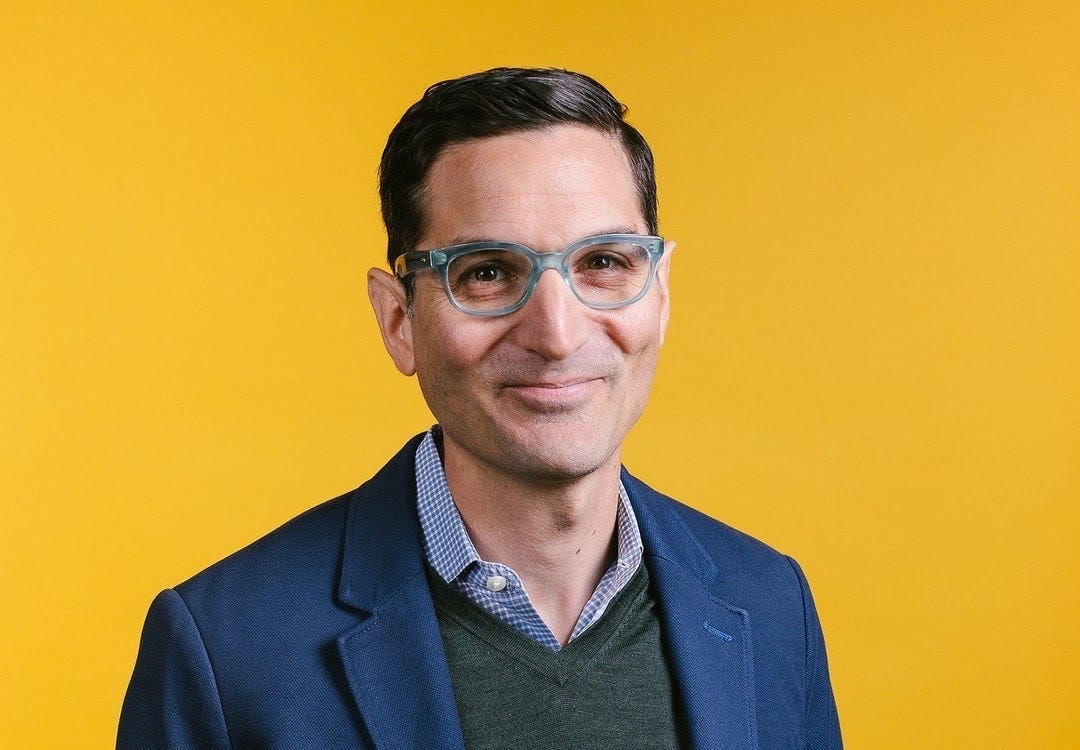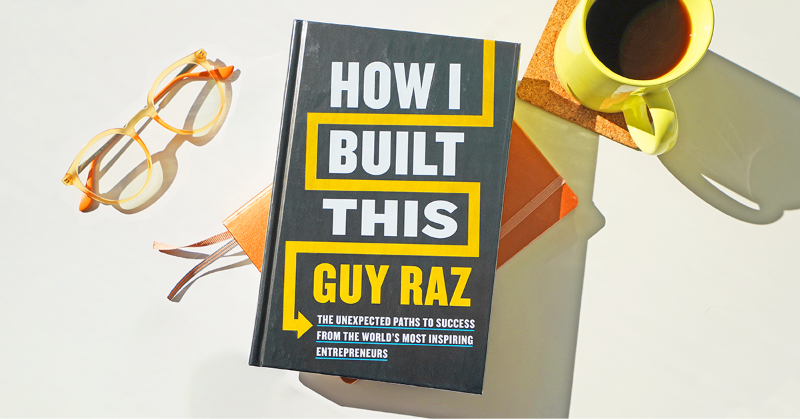This week on How I Built This, I sat down with Carlton Calvin – the toy entrepreneur behind Razor, the scooter brand that seemed to take over the world in the summer of 2000.
Carlton didn’t invent the aluminum scooter.
But he helped turn it into the Razor craze of 2000… then survived the crash that followed, rebuilt a brand, and quietly created a durable business across scooters, dirt bikes, go-karts, hoverboards, and more.
It’s an INCREDIBLE story.
I learned a LOT from Carlton including these ten lessons:
1) Distribution beats invention (and often is the invention)
Carlton didn’t start with patents; he started with doors.
He had relationships with buyers at Toys “R” Us, Target, and sporting goods chains — and could move product fast. Plenty of companies were making aluminum scooters; Razor won because it secured the right global partnership (with Gino Tsai and Robert Chen), owned the brand story, and placed units everywhere at once.
Try this: Before perfecting the product, perfect your path to market. Map the 3–5 accounts or channels that, if won, make the rest of the launch inevitable.
2) Craze economics are real — and ruthless. Plan for zero.
Carlton had lived through Pogs, Slammers, and yo-yos. He knew fads end suddenly.
Razor sold around 1M scooters a month in mid-2000… and then, almost overnight in early 2001, orders flatlined. Retailers went from COD checks to asking him to take inventory back.
Try this: Build P&Ls that survive a hard stop. Hard caps on reorders. Inventory kill-switches. Scenario plans where next month’s sales = 0.
3) Cash terms can finance a rocket ship
During the craze, some retailers paid cash on delivery. That single operational choice effectively financed Razor’s hypergrowth without outside capital.
Try this: Negotiate working-capital terms as aggressively as pricing. “Payment timing” is often the cheapest growth capital you’ll ever get.
4) When everyone owns the product, own the brand
Copycats were everywhere. Patents helped, but not enough.
The durable moat became Razor itself — a promise of quality, safety, and fun that could stretch into “good-better-best” SKUs (A2, A3), then into new categories (electric scooters, dirt bikes, RipStik).
Try this: Decide what your brand guarantees that knockoffs won’t. Codify it into specs, packaging, service, and pricing tiers.
5) Keep the team when your instinct is to cut
After the crash, Carlton’s reflex was to fire everyone and retreat. His partner Robert said don’t — keep the muscle you’ll need for the next act.
That decision let Razor pivot quickly into brand extensions and powered ride-ons.
Try this: In a bust, protect the people who create velocity: sales ops, sourcing, QA, and product. If you must cut, do it once, surgically — but preserve your ability to ship the next thing.
6) Sales is a system, not heroics
One buyer meeting won’t build a business. Carlton hired a sales manager who assembled a national rep network, opening specialty retail and mass at the same time. That’s how scorpion yo-yos and then scooters scaled from “cool” to ubiquitous.
Try this: Treat sales architecture like product architecture. Territories, rep incentives, demo assets, retail theater, replenishment cadence — write it down and iterate.
7) Turn hits into “evergreens”
Razor transformed from fad-chaser to category owner by “Razor-izing” classics (Big Wheel became Scream Machine), then going electric early.
The result: a portfolio where the electric motorcycle and scooter became steady dollar engines, while selective bets chased the next big thing (RipStik, hoverboards).
Try this: Split roadmap into two lanes: Evergreen (steady, margin-rich, defensible) and Exploration (spiky upside). Resource and measure them differently.
8) Partnerships run on trust — and flexible economics
When Razor was stuck with excess inventory, factory partner Gino shared the pain and adjusted pricing to help the company survive. That kind of trust isn’t an accident; it’s built over years of fairness and straight dealing.
Try this: Choose partners who can win with you and absorb shocks with you. Price for a relationship, not a single PO.
9) IP helps; capabilities defend
As patents expired, what kept copycats at bay in electrics wasn’t paperwork — it was execution: battery safety, firmware, quality control, and supply-chain know-how.
Those are harder to steal.
Try this: Identify the 3–5 “hard-to-replicate” competencies behind your product (compliance, testing, industrial design, service). Invest there relentlessly.
10) Luck is real — manufacture your exposure to it
What if Carlton hadn’t read that one LA Times story about scooters in Tokyo?
He calls luck “humbling,” but notice what he did: he kept his eyes open, talked to everyone, tested constantly, and moved fast when weak signals appeared.
That’s how luck finds you.
Try this: Create a weekly “weak signals” ritual. 30 minutes to log odd patterns, niche forums, store visits, or customer emails. Act on one signal each week.
Final Thought:
Razor’s story looks like a roller coaster from the outside:
Pogs → yo-yos → fingerboards → scooters → bust → brand → electrics → hoverboards → tariffs.
But underneath is a simple pattern: earn distribution, ship fast, respect cash, extend the brand, and keep listening for the next wave.
If this resonated, share it with a builder in your life. And if you haven’t yet, please do subscribe so these lessons land in your inbox each week.
Have a great week!
P.S. If you loved the episode, follow the show in your podcast app so you never miss one. And yes, you can still find scorpion slammers on eBay. Some crazes never die — they just molt.
On the Podcasts This Week!
From Fad to Franchise: Razor Scooters
The trick isn’t catching a craze…it’s building a brand that survives the crash. That’s Carlton Calvin’s story in a sentence.
He launched his career by riding toy waves like Pogs and yo-yos. He even invented the infamous “scorpion slammer” for Pogs in his little garage in Southern California. But each craze died almost as fast as it launched, leaving Carlton with a hard lesson in timing and risk.
These experiences made him unusually ready for what came next.
After reading about yet another trend taking off in Tokyo, Carlton made a different bet: don’t just participate in the craze, be the craze.
This is how Razor Scooters were born.
Carlton moved fast with big-box retail and in the summer of 2000, he was moving roughly a million scooters a month!
But yet again… the bottom fell out. And by early 2001, orders went to zero overnight. Carlton’s instinct was to cut his losses, until a business partner pushed him to keep the things running and think long term.
So with a solid brand in place, Carlton “razorized” other toys and leaned into new trends (some ahead of their time). Through each cycle, the constants were speed, partnerships, and an obsessive feel for what your customers actually want.
Today, the Razor brand endures and Carlton is still looking for the next great craze!
HIBT Advice Line: Grow with Intention
This week on the Advice Line, I’m joined by Dave Weiner, founder and CEO of Priority Bicycles. After a serious cycling accident and years navigating supply chain shocks, Dave has emerged with a new lens on leadership: slow down, stay lean, and build with purpose.
First up, Dave: How do I take a regional product national when people don’t get it?
Dave runs Dave’s Coffee in Rhode Island and makes a clean-label coffee milk syrup. But outside New England, most customers don’t know what it is. Our advice? Own the category by teaching people what they’re missing.
Next, Alex: Should I scale? or stay small and sane?
Alex operates Kin Loch Farmstead, with weddings, wine, and lavender goods. The business is thriving…but so is her stress. Dave and I recommended a four-quadrant audit: weigh time, money, joy, and stress.
Finally, Sabrina: How do I land bigger B2B clients for my custom dog treats?
Sabrina founded Idaho Barkery, making allergy-friendly dog treats with stamped logos for hotels and brands. She wants to grow into larger B2B deals. We suggested making it dead simple to buy. When it’s easy, repeat business follows.
Dave leaves us with this: Good leaders don’t need to be right all the time. They need to get it right over time. That means listening deeply, adjusting quickly, and staying curious.
If you would like to be featured on an upcoming episode, call and leave a 1-minute message at 1-800-433-1298 or send a voice memo to hibt@id.wondery.com
Jason Sudeikis on How Ted Lasso Helped Him Heal
Before he became a household name on SNL and Ted Lasso, Jason Sudeikis was an amateur basketball point guard from Kansas.
It turns out, those “hot dog” moves weren’t just about basketball. They were his first steps into performance.
In this conversation, Jason opens up about his path from the courts of Overland Park to the halls of Second City, the writer’s room at SNL, and eventually to creating one of the most beloved characters in modern television.
Along the way, he shares the mentors who shaped him, the cities that sharpened him, and the inner work that ultimately made Ted Lasso possible.
This is more than a story about a hit TV show. It’s about craft, patience, and kindness.
Watch it on YouTube:
Dara Treseder: Building Teams That Move the World
From Ibadan, Nigeria, to the C-suite of Peloton and Autodesk, Dara Treseder’s journey has been powered by purpose and people.
Dara followed a path that led through Harvard, Stanford, and roles at Apple and Goldman Sachs before finding her calling in marketing.
And by 2020, she was leading global marketing at Peloton, where her bold, human-centered approach helped the brand break through in a time of massive growth.
But Dara doesn’t believe in solo success.
In this conversation, she shares why building high-performing, mission-driven teams is the key to making real change:
The best way to drive change is not to try to go alone. It’s to do it with others.
Trapped in a Video Game?!
One rogue squirrel, one chewed VR cable, and boom – me, Mindy, and Grandma G-Force are suddenly trapped inside a video game!
The only way out? Beat every level… using science.
In this week’s Wow in the World, each level of the game challenges our brains in a different way… and surprise, surprise: these are all areas where gamers tend to shine!
From Simon Says-style to digital dodgeball, we discover that playing video games can actually test our memory, logic, reaction time, and brainpower!
Tune in for this high-score, high-science adventure of Wow in the World!
AI & You (Featuring Girls Who Code)
Can artificial intelligence wear pants, make up new languages, or become a UN ambassador?
This week on Two Whats?! And a Wow!, we get a little help from the coding wizards at Girls Who Code to separate the real AIs from the real “whats?!”
You’ll learn which tech legend taught computers to recognize cats, how a teenager invented an anti-cyberbullying spellchecker, and why you might want to double-check your new tech support “mouse.”
From the Archives!
Priority Bicycles: Dave Weiner
In 2014, Dave Weiner walked away from his role as a software CEO to chase a different kind of startup dream.
Frustrated by the complexity and upkeep of traditional bikes, he set out to build something simpler: a low-maintenance, rust-proof bicycle with a carbon belt drive instead of a chain. He launched Priority Bicycles with a Kickstarter campaign and was instantly overwhelmed: 1,500 orders rolled in, and Dave had to scramble to fulfill them.
Selling direct-to-consumer helped keep prices down, and the brand steadily expanded—offering new models and partnering with hotels to provide easy-to-ride bikes for guests.
Today, Priority offers 25 models and sells about thousands of bikes a year. His story is a reminder that sometimes, the best way forward is to shift gears entirely.
Rad Power Bikes: Mike Radenbaugh
As a teenager in rural Northern California, Mike Radenbaugh had a problem: his daily bike ride to high school was 16 miles of hills and exhaustion.
So he did what any inventive kid might do…he strapped a motor and battery to an old mountain bike and created his own electric ride.
And neighbors started asking for their own, Mike saw the beginnings of a business.
He eventually co-founded Rad Power Bikes and designed an e-bike with fat tires, a throttle, and enough power to cruise at 20mph.
Since then, Rad Power Bikes has grown into one of the largest e-bike brands in the U.S., with soaring demand driven by commuters, adventurers, and pandemic-era riders alike.
See you next time!
What do you want more or less of?
Just send a tweet to @guyraz or a message on IG to @guy.raz or LinkedIn and put #GuyRazNewsletter at the end so I can find it.


